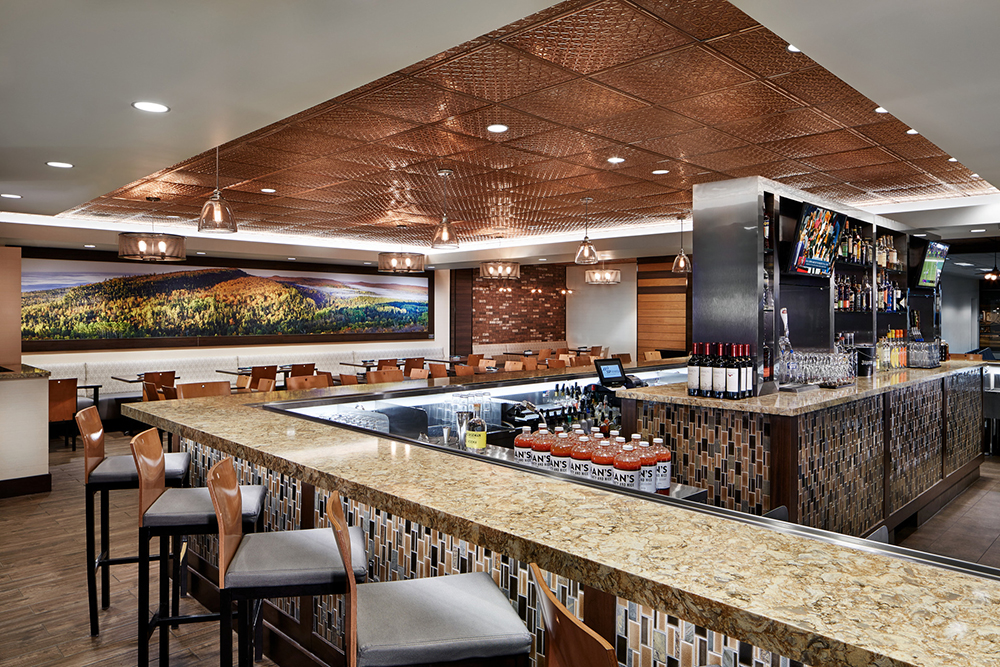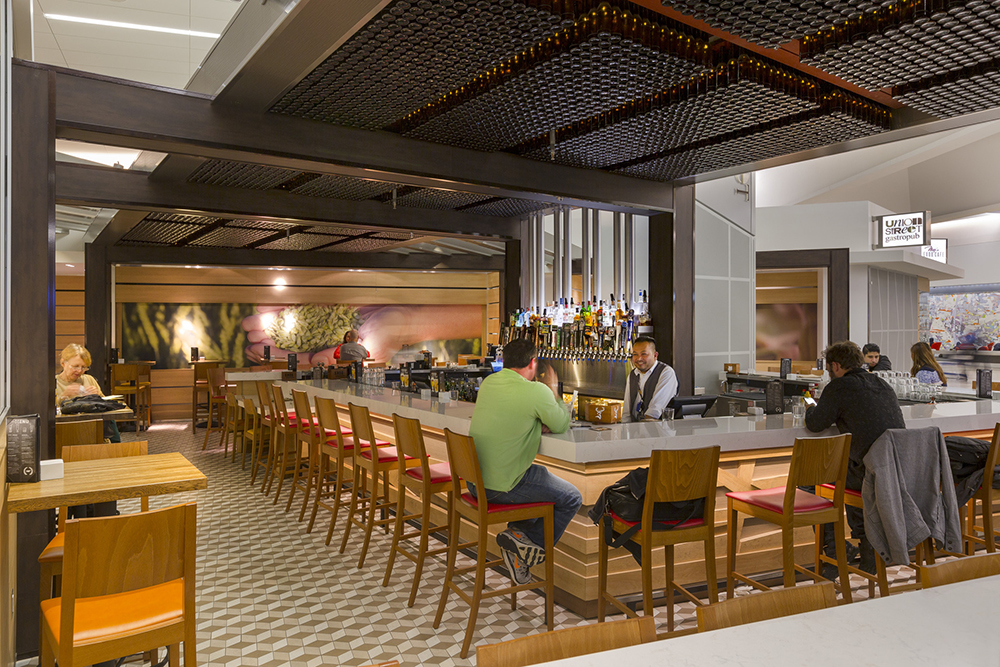
One of the best ways to immerse yourself in the character of a city is through its food. Local cuisine is often a major draw for travelers when selecting vacation and business destinations. Airport authorities are taking note of this trend as an opportunity for increased revenue, international recognition and civic pride. For the past decade, travelers have witnessed major transformations at airports across the United States. From Boston to San Francisco, airport terminals are being planned with a goal to enhance the travel experience. One trend to emerge from this massive undertaking: Creating airport food and beverage destinations that reflect an area’s local culture, incorporate distinctive design and meet strict concession standards.
At the heart of this movement is the desire to create authentic experiences and lasting impressions. To capture the local flare, airports are turning to local hot spots to contribute cuisine and atmosphere. Working in close partnership with the local entrepreneurs, airport food and beverage operators are creating dining destinations that extend local authenticity to a high traffic environment and adapting them to meet the needs of today’s travelers.

Local brands are an outgrowth of regional tastes and products, demonstrating craft and preparation styles that resonate within a community at large. These companies are typically owned by community members, with the connection to customers being direct, face-to-face and founded on the notion of mutual trust. By integrating these brands, airports can contribute a unique level of local hospitality to the travel experience.
SSP America, a leading operator of food and beverage brands in travel locations, recently opened several restaurants at Minnesota’s Minneapolis-Saint Paul (MSP) International Airport.
SSP America worked with Stillwater Minnesota-based restaurateurs to open a hometown favorite - LoLo American Kitchen. Known for their locally sourced ingredients and eclectic, upscale food and custom cocktails, SSP worked closely with the LoLo’s owners to produce an airport-centric adaptation. JCJ Architecture implemented the concept using clean, modern lines, medium-toned textured woods, and durable porcelain tile with wood impressions and coloration. Earth tone metal details were used to assemble a variety of bar and seating options, many of which had direct power and USB access and a convenient view of the gates - vital design details for traveler convenience.

Having successfully executed their concept, SSP’s LoLo American Kitchen was named one of “USA Today’s Readers’ Choice Top 10 Airport Bars” and was a highly commended winner in Airport Bar of the Year category of the 2018 Moodie Davitt Airport Food and Beverage (FAB) Awards. These accolades speak to the successful implementation of this approach and how the space has translated into positive experiences.
Similarly, at San Francisco International Airport, the SSP team devised Union Street Gastropub, a 36-tap craft beer venue intended as a homage to one of the original cities where the handcrafted microbrewery trend began.
To remain in keeping with Terminal 3’s minimal, white/off-white palette, modern lines and emphasis on daylight, JCJ’s design team developed a multi-layer bar and restaurant space complete with 9,000 individually lit beer bottles suspended from a self-supporting steel frame, which affectionately became known as the ‘beer bottle ceiling.’ The up-lighted glass wall that forms the backdrop to the bar evokes a hearth-like setting when juxtaposed to the natural mission oak finishes. A trompe l’oeil marquetry porcelain tile floor references a common motif of the Victorian era, culminating in a fresh modern update to San Francisco’s 19th century architectural milieu.
Travelers across the nation have embraced the individualization of airport food & beverage. Airports in the northeast and across the nation have welcomed the movement and have seen this become part of the public perception of their location. Restaurants such as LOLO’s and Union Street Gastropub bring a refreshed, local and exciting culinary experience for travelers. By integrating the region’s culture into their menus and design, the airport becomes an extension of the city’s hospitality, transforming into a desirable travel destination.
Rick Marencic, IIDA, NCIDQ, is a design principal and studio leader at JCJ Architecture, Hartford, Conn.








